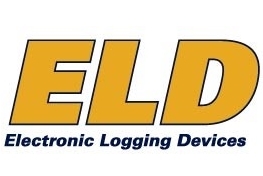

mandate gave 2 extra years for carriers using ERDs to switch to ELDs, Canada’s ELD rules have no such provision. the HOS information is directly transferred to the data-repository or ERODS, whereas in Canada HOS records are directly reported to the officer. Transport Canada has fixed a 16-hour window for shifts, which also include 2 off-duty hours. mandate allows truckers a 30-minute break after driving for 8 consecutive hours. The difference is, the United States has allowed manufacturers to self-register their device if it meets all FMCSA criteria, while Transport Canada has stated that all electronic logbooks must be certified by approved third-party agencies. mandate has made it compulsory to use only registered electronic logbooks for recording HOS.


#ELD PERSONAL CONVEYANCE DRIVER#
For instance, the driver can drive the vehicle to a garage or lodging.
#ELD PERSONAL CONVEYANCE MANUAL#
The ELD Mandate regulations also facilitate better tracking and managing of commercial vehicles saving millions on paperwork and manual labor.ĮLD Mandate rules published by Transport Canada and FMCSA in Canada and the U.S. Any commercial vehicle owner or fleet carrier failing to comply with these regulations by that date will be penalized.Ĭanada ELD rules have been issued by Transport Canada to increase road safety and vehicle security. An original compliance extension of one year was established by Transport Canada for progressive enforcement, which was later extended by six months so that papers log will not be accepted from Januonwards.
#ELD PERSONAL CONVEYANCE DRIVERS#
A Brief Overview of Canada ELD Mandate RulesĬanadian ELD Mandate rules will make it obligatory for all commercial vehicle drivers to record hours of service through registered electronic logging devices. This complete guide on Canada ELD Mandate rules will discuss all the crucial factors related to the final rule issued by Transport Canada. and Canada ELD Mandate rules and its implications for carriers operating in both countries. While Canada ELD rules have set the clock ticking for commercial vehicle owners to switch to a certified ELD, it has also led to several points of confusion, including the similarities and differences between U.S. Transport Canada released the final ELD Mandate rules through the Canada Gazette on June 13, 2019, which came into effect on June 12, 2021, and will be fully enforced beginning January 1, 2023.


 0 kommentar(er)
0 kommentar(er)
